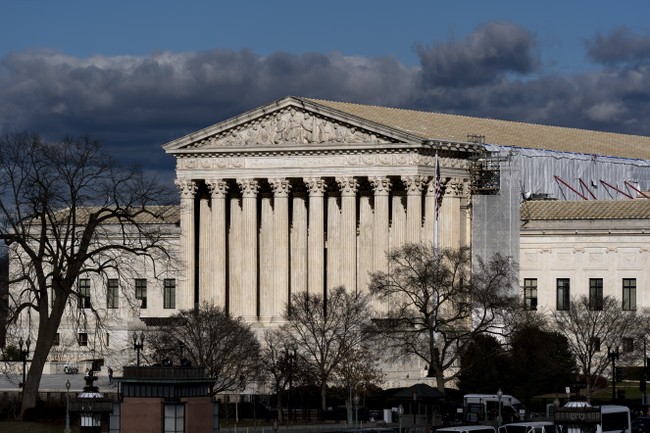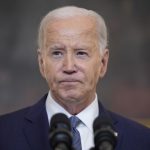
Consider today a very disappointing day at the Supreme Court. Not only did the court publish only two of the outstanding opinions in unresolved cases this term, they also chose to punt on one of the most important.
Advertisement
Murthy v Missouri took on the censorship syndicate that formed during the pandemic between government agencies and social-media platforms. The Fifth Circuit held for the plaintiffs and enjoined those agencies and others from coordinating with the Big Tech moderators to quash debate and dissent. Rather than deal with the clear First Amendment threats this creates, the court chose to reject the case on standing, in a 6-3 decision that crossed ideological lines.
[This decision demonstrates the dire need to support free and independent voices and protect free debate from the Big Tech-Government Censorship Complex. Many of our readers have joined the fight as part of our VIP and VIP Gold membership, and they have been crucial to our operations as an independent platform and the ability to debate all of the issues honestly. Join us in the fight. Become a HotAir VIP member today and use promo code CENSORSHIP to receive a 50% discount on your membership.]
Justice Amy Coney Barrett wrote for the majority, which included Justices Sonia Sotomayor, Elena Kagan, and Ketanji Brown Jackson (from the summary):
Held: Neither the individual nor the state plaintiffs have established Article III standing to seek an injunction against any defendant. Pp. 8–29. …
The plaintiffs’ counterarguments are unpersuasive. First, they argue that they suffer “continuing, present adverse effects” from their past restrictions, as they must now self-censor on social media. O’Shea, 414 U. S., at 496. But the plaintiffs “cannot manufacture standing merely by inflicting harm on themselves based on their fears of hypothetical future harm that is not certainly impending.” Clapper, 568 U. S., at 416. Second, the plaintiffs suggest that the platforms continue to suppress their speech according to policies initially adopted under Government pressure. But the plaintiffs have a redressability problem. Without evidence of continued pressure from the defendants, the platforms remain free to enforce, or not to enforce, their policies—even those tainted by initial governmental coercion. And the available evidence indicates that the platforms have continued to enforce their policies against COVID–19 misinformation even as the Federal Government has wound down its own pandemic response measures. Enjoining the Government defendants, therefore, is unlikely to affect the platforms’ content-moderation decisions. Pp. 21–27.
(c) The plaintiffs next assert a “right to listen” theory of standing. The individual plaintiffs argue that the First Amendment protects their interest in reading and engaging with the content of other speakers on social media. This theory is startlingly broad, as it would grant all social-media users the right to sue over someone else’s censorship—at least so long as they claim an interest in that person’s speech. While the Court has recognized a “First Amendment right to receive information and ideas,” the Court has identified a cognizable injury only where the listener has a concrete, specific connection to the speaker. Kleindienst v. Mandel, 408 U. S. 753, 762. Attempting to satisfy this requirement, the plaintiffs emphasize that hearing unfettered speech on social media is critical to their work as scientists, pundits, and activists. But they do not point to any specific instance of content moderation that caused them identifiable harm. They have therefore failed to establish an injury that is sufficiently “concrete and particularized.” Lujan v. Defenders of Wildlife, 504 U. S. 555, 560. The state plaintiffs assert a sovereign interest in hearing from their citizens on social media, but they have not identified any specific speakers or topics that they have been unable to hear or follow. And States do not have third-party “standing as parens patriae to bring an action against the Federal Government” on behalf of their citizens who have faced social-media restrictions. Haaland v. Brackeen, 599 U. S. 255, 295. Pp. 27–28.
Advertisement
Barrett makes clear that this is a punt rather than a conclusion on the merits:
We begin—and end—with standing. At this stage, neither the individual nor the state plaintiffs have established standing to seek an injunction against any defendant. We therefore lack jurisdiction to reach the merits of the dispute.
There is much to be said for precision and clarity on standing in federal court. That value prevents the judiciary from becoming a policy-making branch of government, or at least prevents an expansion of those outcomes. And we might have guessed that the Supreme Court might rule in this direction when they agreed to review the case, rather than pass on it and allow the Fifth Circuit’s tailored orders to go into effect.
However, this case directly crosses the First Amendment and the prohibition of interference by the government in viewpoints and access to public debates. This isn’t a case of private actors moderating those spaces, but active government intervention to quash debate and dissent on government policies, most notably on pandemic policies and the origin of COVID-19. The precious approach to standing ignores a real danger to democracy and self-governance, not just the hyperbolic hysteria over ‘misinformation,’ and ignores the fact that while the platforms do moderation, it’s the government setting those standards and in some cases backed up in the record by threats of penalties for non-compliance.
Justice Samuel Alito hits the nail squarely on the head in his dissent, joined by Justices Clarence Thomas and Neil Gorsuch:
If the lower courts’ assessment of the voluminous record is correct, this is one of the most important free speech cases to reach this Court in years. Freedom of speech serves many valuable purposes, but its most important role is protection of speech that is essential to democratic self-government, see Snyder v. Phelps, 562 U. S. 443, 451–452 (2011), and speech that advances humanity’s store of knowledge, thought, and expression in fields such as science, medicine, history, the social sciences, philosophy, and the arts, see United States v. Alvarez, 567 U. S. 709, 751 (2012) (ALITO, J., dissenting).
The speech at issue falls squarely into those categories. It concerns the COVID–19 virus, which has killed more than a million Americans.1 Our country’s response to the COVID–19 pandemic was and remains a matter of enormous medical, social, political, geopolitical, and economic importance, and our dedication to a free marketplace of ideas demands that dissenting views on such matters be allowed. I assume that a fair portion of what social media users had to say about COVID–19 and the pandemic was of little lasting value. Some was undoubtedly untrue or misleading, and some may have been downright dangerous. But we now know that valuable speech was also suppressed.2 That is what inevitably happens when entry to the marketplace of ideas is restricted.
Of course, purely private entities like newspapers are not subject to the First Amendment, and as a result, they may publish or decline to publish whatever they wish. But government officials may not coerce private entities to suppress speech, see National Rifle Association of America v. Vullo, 602 U. S. 175 (2024), and that is what happened in this case.
Advertisement
Alito ties this case to Vullo, which the court decided in this same term in the opposite direction. While the federal agencies may have been slightly more subtle than the New York bureaucrat, their intimidation is more dangerous because of it. And this decision sets incentives that Americans and future courts will live to regret, Alito warns:
These past and threatened future injuries were caused by and traceable to censorship that the officials coerced, and the injunctive relief she sought was an available and suitable remedy. This evidence was more than sufficient to establish Hines’s standing to sue, see Lujan v. Defenders of Wildlife, 504 U. S. 555, 561–562 (1992), and consequently, we are obligated to tackle the free speech issue that the case presents. The Court, however, shirks that duty and thus permits the successful campaign of coercion in this case to stand as an attractive model for future officials who want to control what the people say, hear, and think.
That is regrettable. What the officials did in this case was more subtle than the ham-handed censorship found to be unconstitutional in Vullo, but it was no less coercive. And because of the perpetrators’ high positions, it was even more dangerous. It was blatantly unconstitutional, and the country may come to regret the Court’s failure to say so. Officials who read today’s decision together with Vullo will get the message. If a coercive campaign is carried out with enough sophistication, it may get by. That is not a message this Court should send.
The Court could tackle this again if a plaintiff could establish standing to the satisfaction of the court’s majority. By leaving the First Amendment issues unresolved, Barrett et al leaves them for potential future litigation — hypothetically, anyway. But under these conditions, how can standing ever be established in such offenses against the explicit guarantees against government interference in political speech and debate? Alito warns presciently that subtlety will encourage more unconstitutional behavior by bureaucrats, both for personal ambitions and for ideological imposition.
Advertisement
There is an opening here for Congress to bar executive-branch agencies from such intrusions into speech and debate. Perhaps they can also structure a special standing for such cases so that the federal courts have no choice but to decide on the merits and enforce the Constitution on the government it restricts. Until then, though, expect the petty authoritarians and the high-ranking ideologues in Washington to use Murthy as a roadmap to perpetuate the Big Brother Censorship Complex.
The court only released one other decision — Snyder, in which the court ruled 6-3 against treating gratuities after the fact as a federal bribery claim. This is a technical case that ends up limiting federal action in state and local cases of corruption, and the split here is along the more traditional ideological lines. That decision seems better advised and hews to the text of the statute. If Congress wants to address gratuities after the fact as bribes, they can do so, but for state and local cases, it’s better to have the states and localities deal with their own corruption.
There are less than a dozen cases left to publish, including the court’s ruling on presidential immunity in Donald Trump’s trial over January 6. The only two remaining publication days on the schedule are this week, so unless the court adds some dates, expect a big drop of cases both days.



